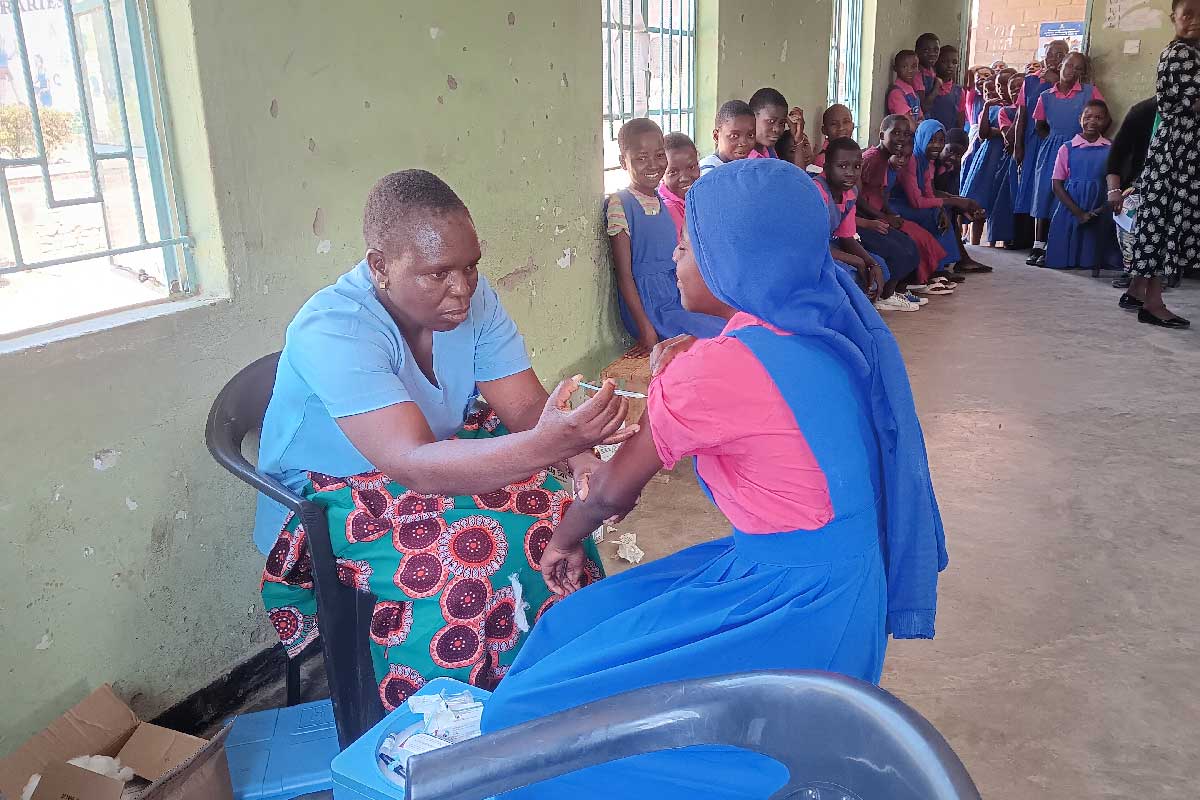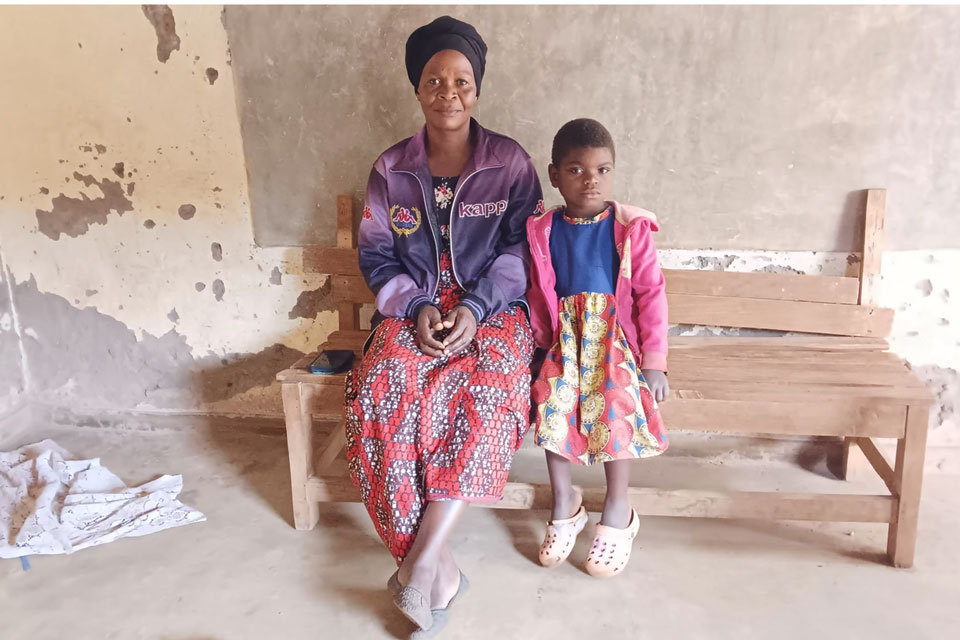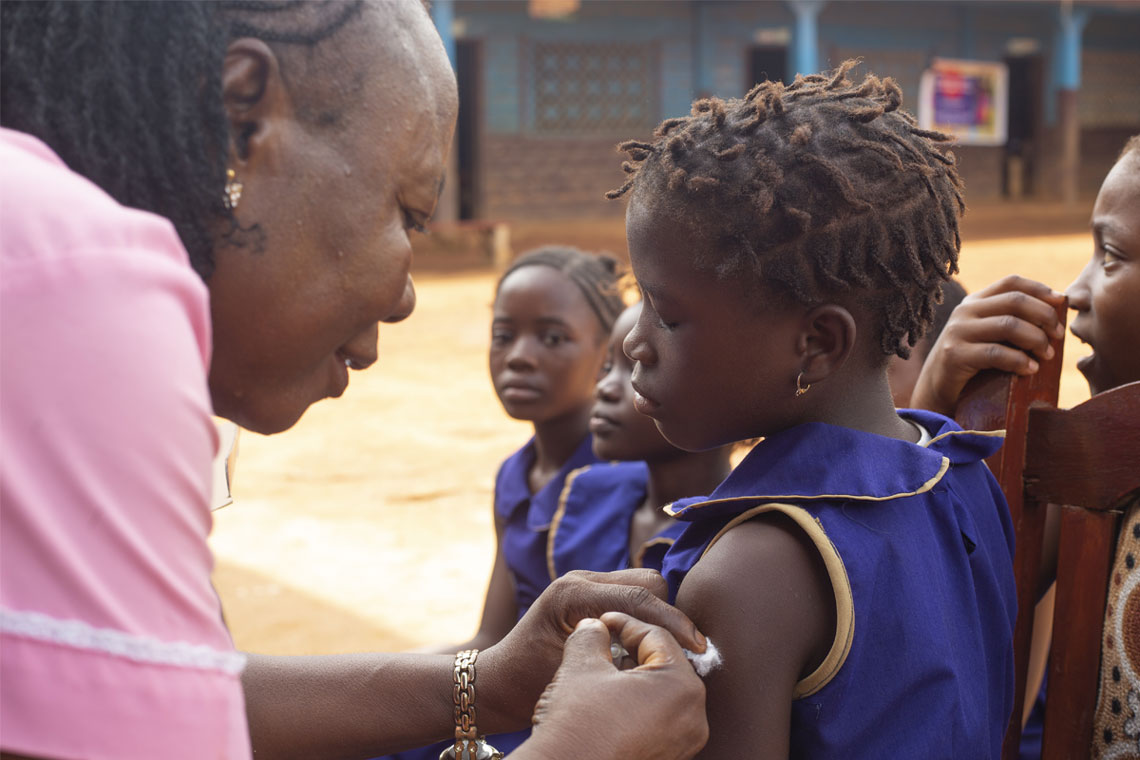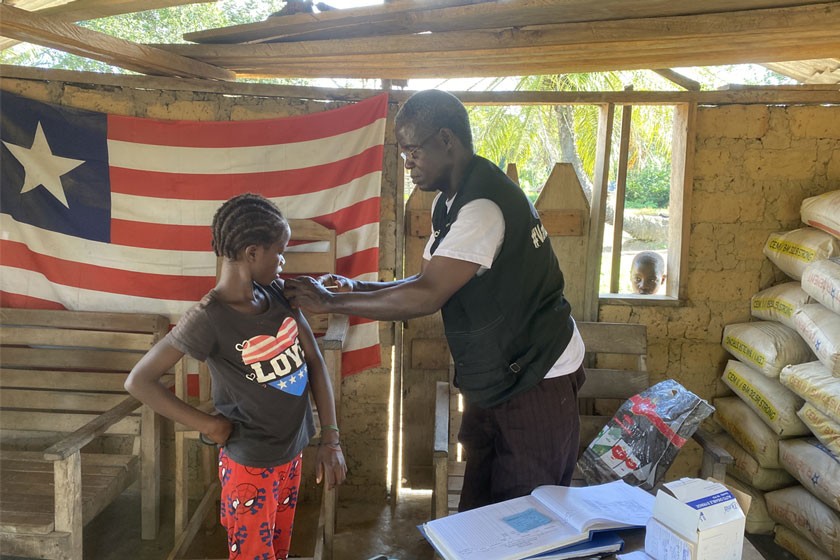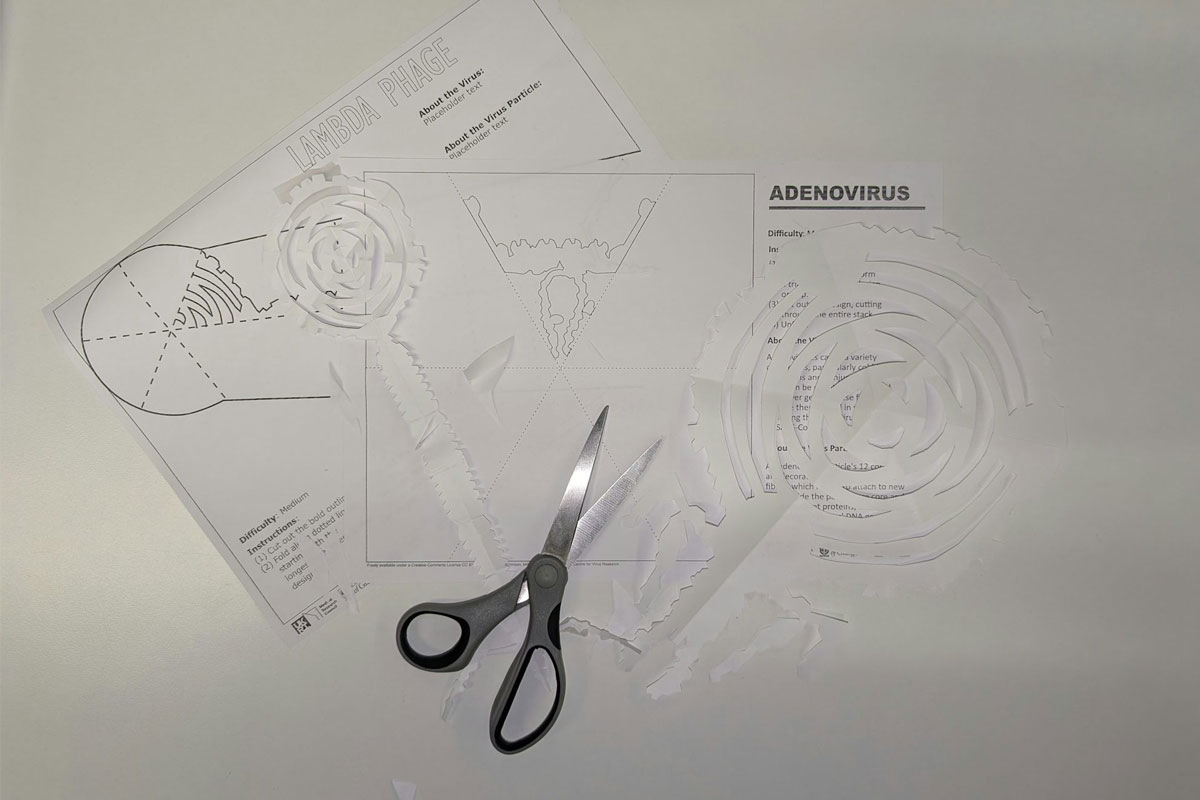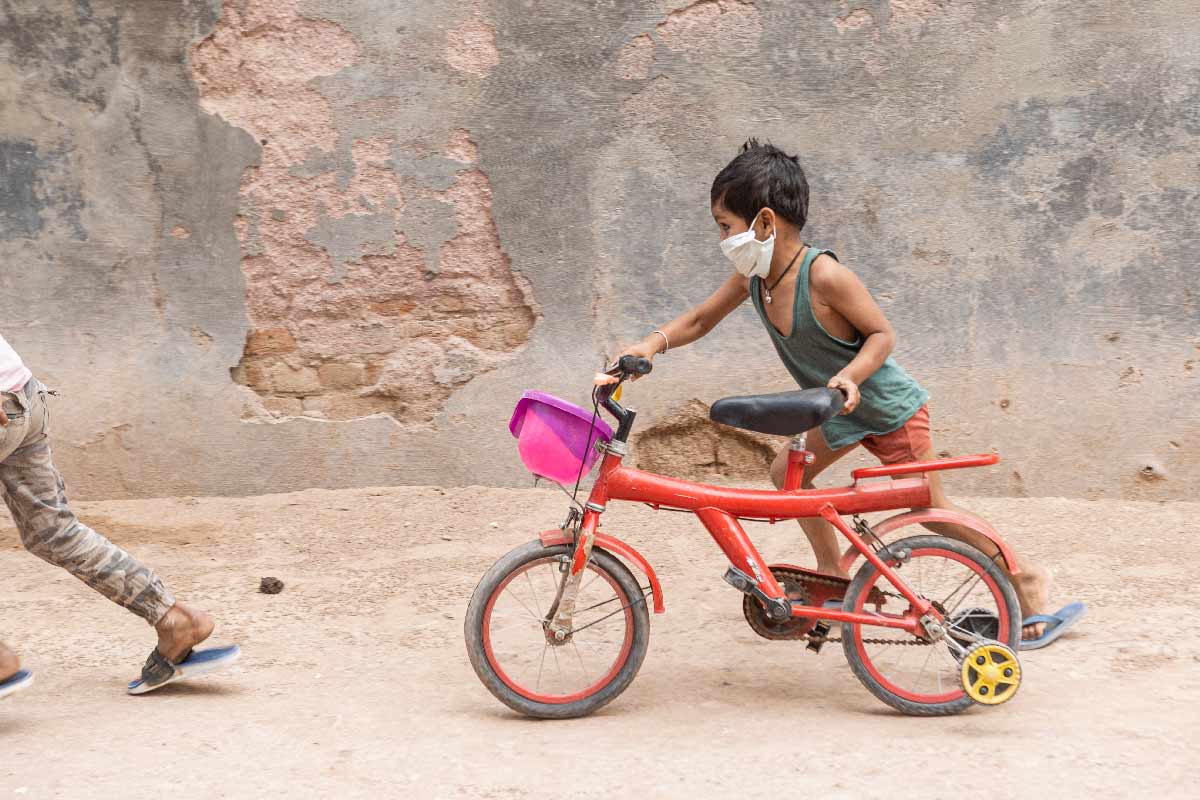Two years after Malawi first rolled out a new vaccine, health workers in typhoid hotspots see its impact
Research suggested the typhoid conjugate vaccine (TCV) could offer 78% protection against an infection that has pummelled many thousands of Malawian families each year. Health workers in Blantyre say it’s working.
- 9 May 2025
- 5 min read
- by Benson Kunchezera

Patuma Mauwa, 35, a mother of three living in Ndirande, a densely-populated part of Blantyre, Malawi, reflects on the toll typhoid once took on her family.
“Previously, I used to visit hospitals frequently, but now things have changed. When a child falls ill, it’s usually something minor like vomiting – we haven’t been hospitalised in a while,” she said.
Just a few years ago, Mauwa’s family were battling fevers, mounting medical bills and lost income from missed work. The low point came when Mauwa had to quit her job at a Blantyre-based company to care for one child, who had fallen sick with typhoid, and then continued to struggle with typhoid-linked complications. Between January 2021 and December 2024, Mauwa’s focus was the child’s recovery.
Given that experience, the introduction of the typhoid conjugate vaccine (TCV) to Malawi’s routine immunisation schedule in May 2023 came as a personal relief. Mauwa’s youngest child got the jab that December.
An unaffordable toll
Typhoid fever, a bacterial infection typically spread through contaminated food and water, kills an estimated 110,000 people each year.
Malawi alone is estimated to see more than 16,000 cases per year, mostly in children under the age of 15. Ndirande, with its densely clustered population and relative scarcity of sanitation facilities, is a particular hotspot.
According to a 2022 study, which estimated the economic burden of typhoid on adults and children in Blantyre, Mauwa’s experience of the economic aftershocks of typhoid illness has been common. Researchers surveyed the families of 109 people with laboratory-confirmed typhoid and found that, on average, the illness cost each household US$ 93.85, despite high uptake of free public health services (direct medical costs only came to, on average, 9.2% of the total financial burden).
The same families spent only US$ 63.85 in a typical month, meaning a bout of typhoid cost them well over a usual month’s aggregate outgoings. “In Malawi, household surplus savings are uncommon,” the researchers noted. In other words, even a survivable typhoid infection is a shock few families can afford to weather.
Malawi’s government, meanwhile, spent more per case of typhoid than it did on other “admittedly more common” childhood illnesses, the study’s authors said. “Investment in prevention of infectious disease through vaccination is not only an inherent good, but also provides other benefits beyond immediate disease prevention to families and society writ large,” they urged.
Real-world protection of 78.3%
Another study, conducted in a large group of children aged between 9 months and 12 years in Ndirande and Zingwangwa between 2018 and 2022 and published in the Lancet in 2024, measured the efficacy of a single dose of TCV in preventing an episode of lab-confirmed typhoid disease in these especially endemic zones of Blantyre.
Four years after the pilot vaccine roll-out, their results were extremely encouraging: “A single dose of [typhoid conjugate vaccine] offered at least 4 years of protection against blood culture-confirmed typhoid fever, with a cumulative vaccine efficacy of 78.3%,” the researchers said. “The loss of vaccine efficacy over time, across all age groups, was estimated to be only 1.3% per annum over more than 4 years. By showing durable protection, this study further highlights the probable public health benefit and economic value of typhoid conjugate vaccines.”
“The story of the typhoid conjugate vaccine in Malawi provides a powerful example of how scientific advancements can translate into real-world impact, particularly in the fight against typhoid fever, a disease that has burdened communities for decades,” reflected Priyanka Patel, the Lancet study’s lead author.
Health workers see signs of change
Armed with that evidence, and with the support of Gavi, WHO, UNICEF and other partners, Malawi made the typhoid conjugate vaccine publicly available as part of the routine childhood immunisation schedule, kicking off the roll-out with a week-long campaign targeting millions of children in May 2023.
“The [initial] roll-out reached over 7 million children. This nationwide campaign was a significant milestone, but the process wasn’t without its challenges. Malawi faced logistical hurdles, particularly in the aftermath of Cyclone Freddy, which caused extensive infrastructural damage. However, despite these obstacles, the TCV coverage was 78%,” said Professor Melita Gordon from the Malawi Liverpool Wellcome Programme, also the principal investigator on the pilot efficacy research project.
Two years on from the introduction, Blantyre health workers report that despite periodic vaccine supply issues, they’re seeing a change in typhoid disease rates. “Since the introduction of the vaccination campaign in 2023, hospitalisation has been reduced,” said Enia Chakuthawa, a Health Surveillance Assistant at Ndirande Health Centre.
Uptake, meanwhile, has grown stronger with time, according to Myless Mhango, Environmental Health Officer and Expanded Programme on Immunization Coordinator for Blantyre. “Mobilisation for routine immunisation has been a success because most people are aware of typhoid conjugate vaccine and its importance. We have been able to bridge the gap between vaccine hesitancy and uptake in our area,” she said.
Drug-resistant typhoid
The success of this routine immunisation programme comes not a moment too soon. Globally, the spread of antimicrobial-resistant forms of typhoid, which first became prominent in the Blantyre area in 2011, has been a mounting concern. That has resulted in available treatment options being “severely diminished”, Gordon told VaccinesWork, adding, “in this context vaccination has emerged as a game-changing solution.”
Patuma Mauwa might agree with that description. She says that since the vaccine’s introduction, and her child’s slow recovery, life has “begun to stabilise”.
